Lhasa is the capital of the Tibet Autonomous Region, and it is often referred to as the “Roof of the World.” Lhasa is one of the highest cities in the world, with an altitude of around 3,650 meters (11,975 feet). This holy city is the spiritual and administrative heart of Tibet, offering a unique blend of natural beauty, cultural richness, and spiritual depth. The city is home to some of the most significant religious sites in Tibetan Buddhism, making it a key destination for pilgrims and tourists alike.
Lhasa offers a unique and enriching travel experience, blending breathtaking landscapes, profound spirituality, and rich cultural heritage. Whether you’re exploring its ancient monasteries or simply soaking in the atmosphere, Lhasa is a destination that leaves a lasting impression.
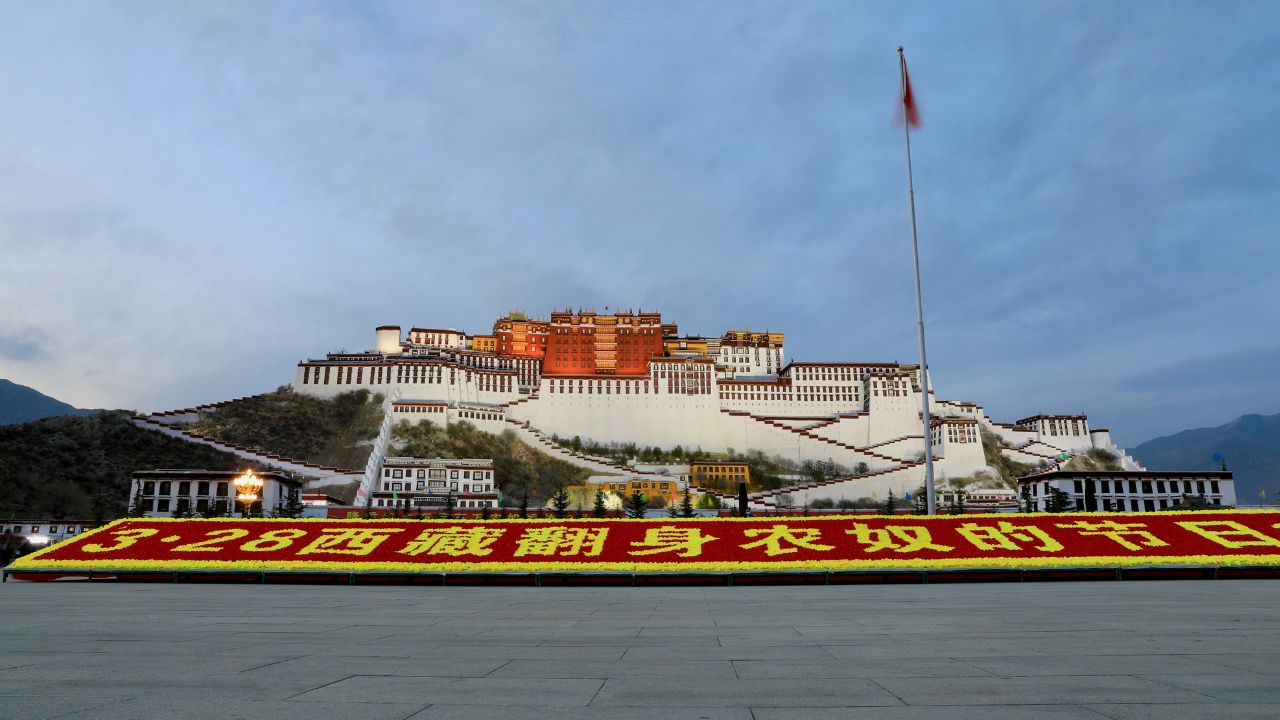
What to Visit and Do in Lhasa
Potala Palace
This is Potala Palace, a UNESCO World Heritage Site and a symbol of Tibetan Buddhism and governance. This stunning palace sits high on Marpo Ri hill, overlooking the city of Lhasa. It was the winter residence of the Dalai Lama and holds a deep historical and cultural significance.
What you will see
- The Red Palace and White Palace
Red Palace: This is where religious study and Buddhist prayer take place. We’ll explore several chapels, shrines, and the tomb stupas of past Dalai Lamas. The intricate murals and the sacred Jokhang Temple are truly awe-inspiring.
White Palace: This part of the palace was the living quarters of the Dalai Lama and the administrative offices. Its bright, white appearance is quite striking against the backdrop of the Red Palace.
- Grand Halls and Chapels:
The palace is filled with grand halls and chapels, each with ancient artifacts, scriptures, and beautiful murals that tell stories of Buddhist mythology and Tibetan history. Notable spots include the Saint’s Chapel and the Dharma Cave.
- Tombs of Past Dalai Lamas:
You’ll see the tomb stupas of previous Dalai Lamas, adorned with gold and precious stones. Each stupa is intricately designed and reflects the significance of the Dalai Lama it honors.
- Architectural Feats:
Potala Palace is a blend of Tibetan, Chinese, and Indian architectural styles. The massive walls, some up to 16 feet thick, are made from rammed earth and stone. It’s incredible to see how these ancient building techniques have stood the test of time.
Cultural and Historical Significance
- Tibetan Buddhism: Potala Palace is a key pilgrimage site for Tibetan Buddhists and the spiritual heart of Tibetan Buddhism. We’ll have a chance to witness monks in prayer and ritual, offering a glimpse into their daily religious practices.
- Historical Repository: The palace houses thousands of ancient texts, scriptures, and artifacts. The murals alone are priceless records of Tibet’s rich cultural heritage.
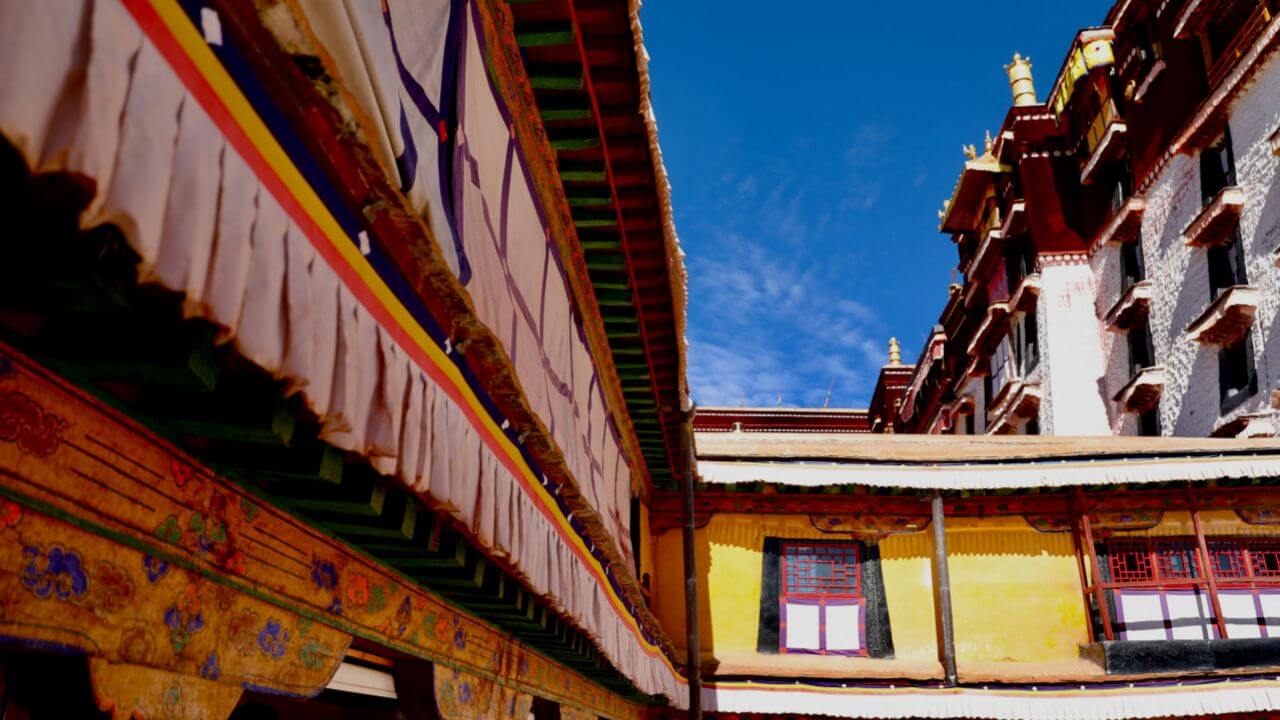
Visitor Tips:
- Acclimatization:
Lhasa is about 3,650 meters (12,000 feet) above sea level. To avoid altitude sickness, we’ll ascend the palace slowly, taking frequent breaks. It’s a good idea to spend a few days in Lhasa to acclimatize before visiting Potala Palace.
- Photography Restrictions:
Photography inside the palace is usually prohibited to protect the artifacts and maintain the sanctity of the space. Please follow the rules and respect this spiritual environment.
- Ticket Booking:
Potala Palace is very popular, and there’s a daily visitor limit. Booking tickets in advance is essential, especially during peak tourist seasons. We’ll need to stick to our specific entry time, so let’s plan accordingly.
- Dress Appropriately:
As a place of worship, modest clothing is recommended. Long sleeves and pants are preferable, and comfortable shoes are a must because we’ll be doing a lot of walking and climbing stairs.
Jokhang Temple
Jokhang Temple is the most sacred temple in Tibetan Buddhism. It is located in the heart of Lhasa, this temple was founded in the 7th century and remains a vital pilgrimage site for Buddhists from all over the world.
Highlights of Our Visit
- Stunning Golden Roof:
As we approach the temple, you’ll immediately notice the magnificent golden roof. It’s a striking feature that shines brightly in the sunlight, symbolizing the purity and grandeur of Tibetan Buddhism.
- Sacred Statues and Vibrant Murals:
Inside the temple, we’ll see many sacred statues and vibrant murals. These artworks are not only beautiful but also tell important stories of Buddhist teachings and Tibetan history. Each mural and statue has its own unique significance and charm.
- The Revered Statue of Jowo Rinpoche:
One of the most important highlights of Jokhang Temple is the statue of Jowo Rinpoche. This statue is considered the most sacred in Tibetan Buddhism and is a focal point for worship and offerings. Pilgrims come from far and wide to pay their respects to Jowo Rinpoche.
Cultural and Historical Significance
- Pilgrimage Site: Jokhang Temple is a central pilgrimage site for Tibetan Buddhists. Pilgrims from all over Tibet and beyond come here to pray and seek blessings. The temple’s significance is deeply rooted in Tibetan culture and spirituality.
- Historical Heritage: Founded in the 7th century, Jokhang Temple has witnessed centuries of Tibetan history. It houses many ancient artifacts and relics that provide a glimpse into the rich heritage of Tibet.
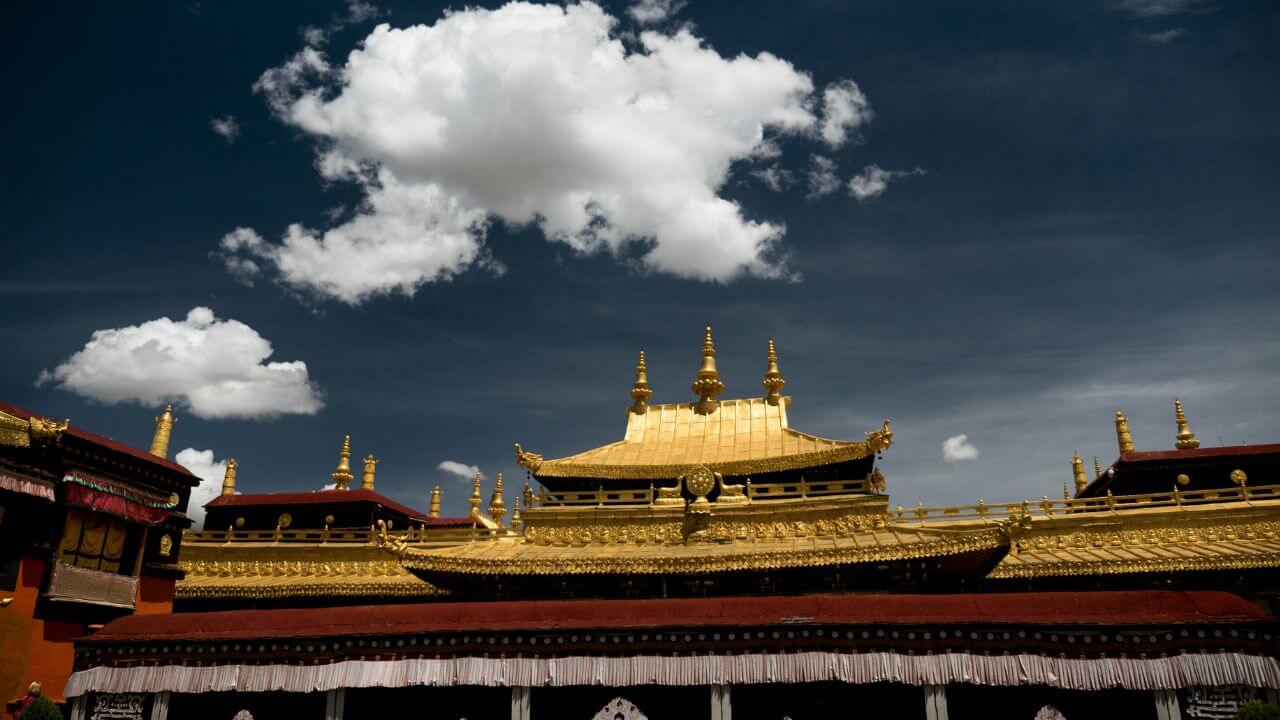
Visitor Tips
Join the Kora (Circumambulation):
For an authentic experience, join the pilgrims in walking the kora around the temple. This circumambulation is a significant religious practice, and participating in it allows you to connect with the spiritual essence of the temple. The kora path is filled with the hum of prayers and the sound of spinning prayer wheels.
Respectful Behavior:
Remember to behave respectfully inside the temple. Dress modestly, keep your voice low, and follow the temple rules. Photography inside the temple is usually not allowed, so be mindful of the guidelines.
Best Time to Visit:
Early morning is a great time to visit Jokhang Temple. The temple is less crowded, and you can observe the morning rituals and the arrival of pilgrims. The atmosphere is serene and filled with devotion.
Learn the History:
Take time to learn about the history and significance of Jokhang Temple. A local guide can provide valuable insights and stories that enrich your visit. Understanding the background of the temple enhances the appreciation of what you see.
Interact with Pilgrims:
If possible, interact with the pilgrims. Their devotion and stories can provide a deeper understanding of the spiritual importance of Jokhang Temple. Always approach with respect and kindness.
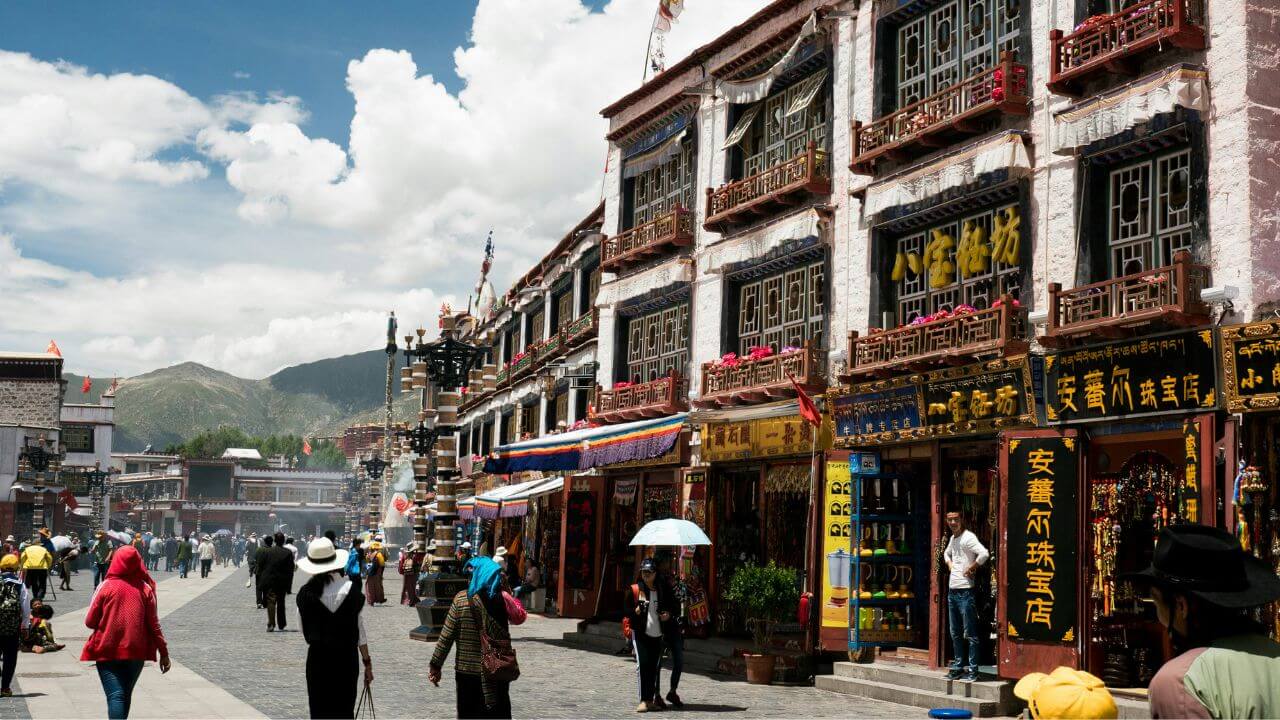
Barkhor Street
Barkhor Street is a bustling market and important pilgrimage route that encircles Jokhang Temple. This lively street offers a fantastic opportunity to observe local life and shop for traditional Tibetan crafts.
What to do and see
Shopping for Traditional Crafts
Barkhor Street is a shopper’s paradise, filled with stalls and shops selling a variety of traditional Tibetan crafts. You can find prayer flags, thangkas (Tibetan paintings), jewelry, and other unique souvenirs. Each item reflects the rich cultural heritage of Tibet and makes for a perfect keepsake or gift.
Lively Atmosphere and Street Performances
The atmosphere on Barkhor Street is vibrant and lively. You’ll see street performances, hear traditional music, and feel the energy of the bustling crowd. It’s a sensory experience that brings the spirit of Tibetan culture to life.
Observing Local Life
As we walk along Barkhor Street, we’ll have the chance to observe the daily life of locals. You’ll see pilgrims making their way around Jokhang Temple, vendors selling their goods, and people engaging in their daily routines. It’s a great way to get a glimpse into the authentic lifestyle of Lhasa’s residents.
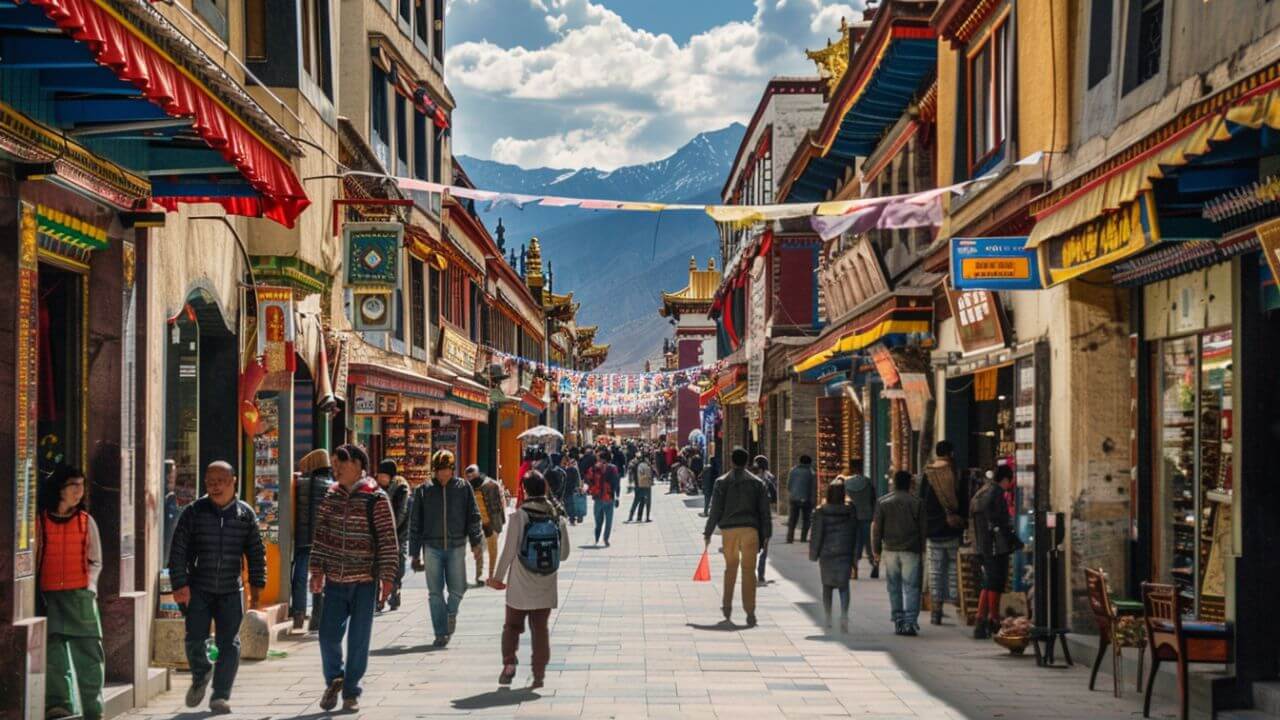
Visitor Tips
Bargain Politely:
When shopping on Barkhor Street, bargaining is a common practice. Be polite and friendly when negotiating prices with vendors. It’s part of the shopping experience here, and a respectful approach can often lead to a better deal.
Respect Local Customs:
Remember to respect local customs and traditions. Dress modestly, especially since Barkhor Street is a pilgrimage route. Be mindful of the religious practices taking place around you.
Keep an Eye on Your Belongings:
The street can get quite crowded, so it’s important to keep an eye on your belongings. While Lhasa is generally safe, it’s always good to be cautious in busy areas.
Try Local Snacks:
Don’t miss the opportunity to try some local Tibetan snacks from the street vendors. From yak butter tea to sweet pastries, the local cuisine is both unique and delicious.
Enjoy the Experience:
Take your time to soak in the vibrant atmosphere. Engage with the vendors, watch the street performances, and enjoy the sights, sounds, and smells of Barkhor Street. It’s a place to experience the heart and soul of Tibetan culture.
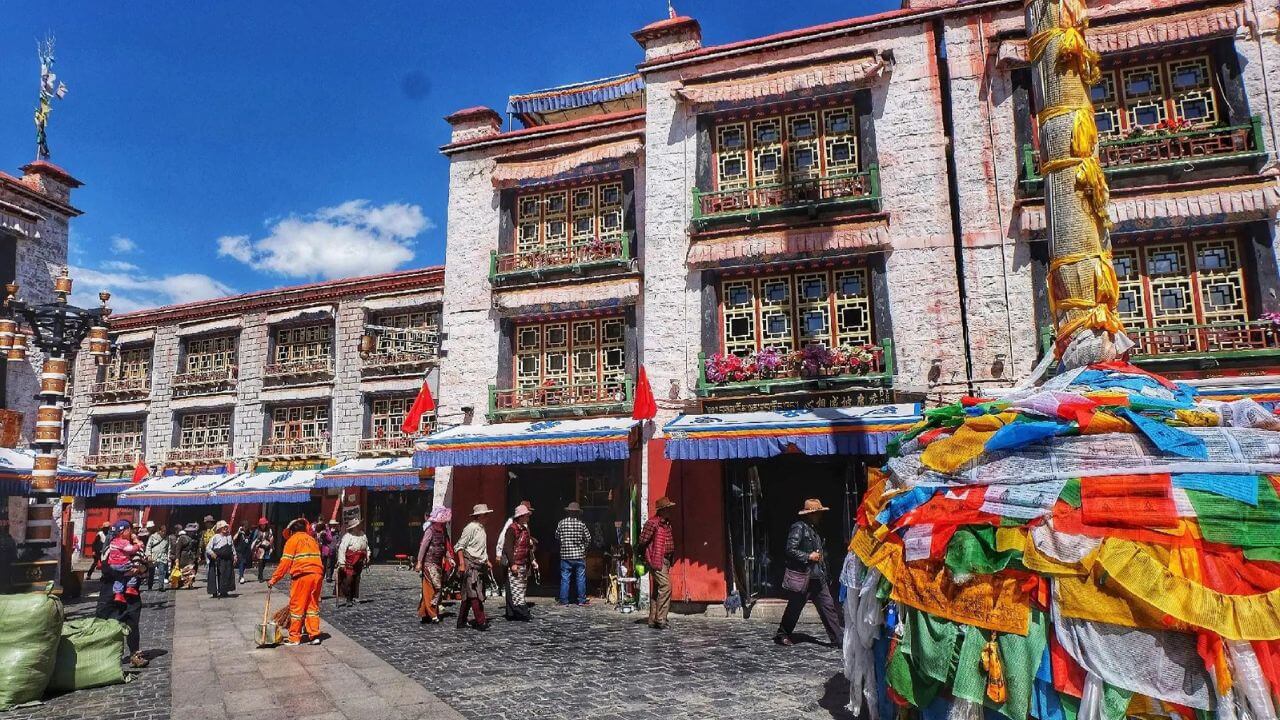
Norbulingka
Known as the “Summer Palace” of the Dalai Lamas, Norbulingka is a beautiful park and palace complex. It offers a peaceful retreat with its gardens and pavilions.
Highlights of Our Visit:
Ornate Palaces:
We’ll explore the ornate palaces within Norbulingka, where the Dalai Lamas once spent their summers. The architecture is stunning, with intricate designs and vibrant colors that reflect Tibetan culture and artistry.
Serene Gardens:
The gardens here are a true highlight, offering a tranquil escape from the hustle and bustle of Lhasa. Stroll through the serene paths, enjoy the blooming flowers, and relax by the peaceful ponds.
Cultural Performances During the Shoton Festival:
If you visit during the Shoton Festival, you’ll be treated to cultural performances, including traditional Tibetan opera. It’s a lively celebration of Tibetan culture and a fantastic experience to witness.
Visitor Tips
Visit During Summer:
The best time to visit Norbulingka is during the summer months when the gardens are in full bloom. The vibrant colors and fragrant flowers make the experience even more enjoyable.
Enjoy the Peaceful Atmosphere:
Take your time to enjoy the peaceful atmosphere of Norbulingka. It’s a perfect place to relax, meditate, or simply take in the natural beauty.
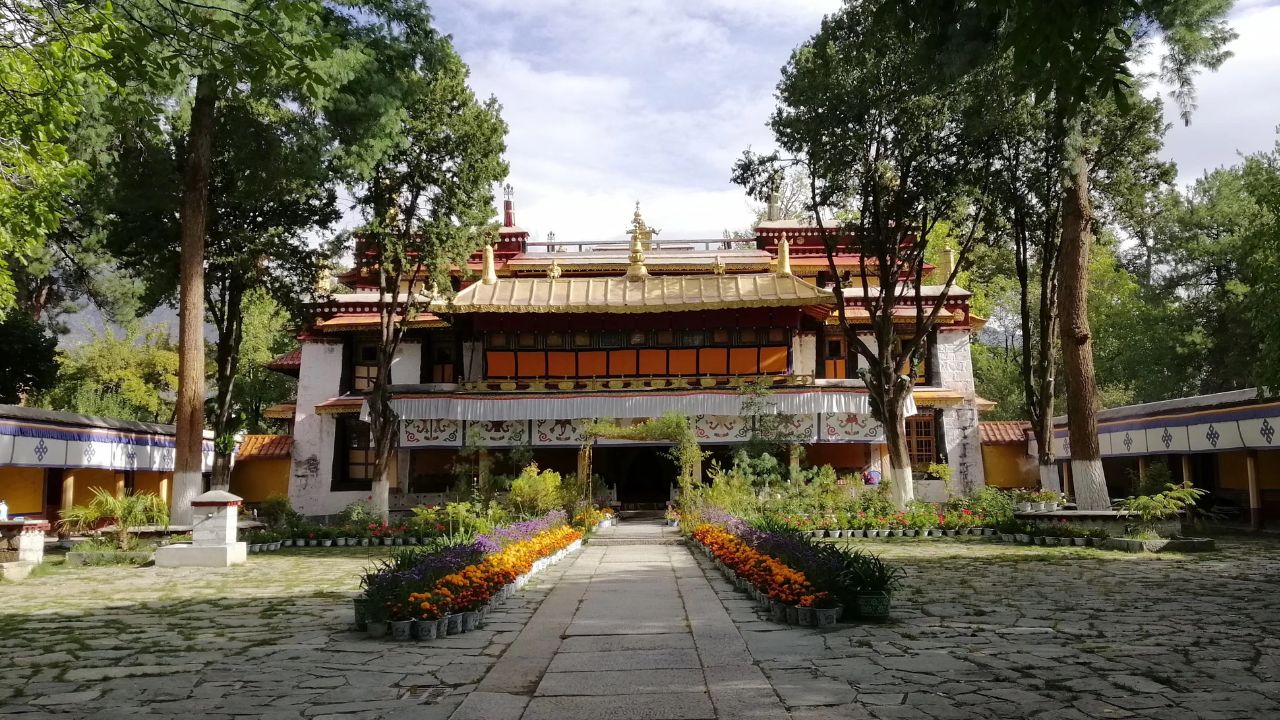
Sera Monastery
Sera Monastery is one of the great Gelugpa university monasteries of Tibet. Known for its vibrant monk debates, this monastery is a center of learning and spiritual practice. Visiting Sera Monastery offers a unique opportunity to experience the vibrant intellectual and spiritual traditions of Tibetan Buddhism. From the lively debates to the serene assembly halls and intricate sand mandalas, there’s so much to see and learn.
What to expect
Lively Monk Debates:
One of the most exciting features of Sera Monastery is the monk debates. Taking place in the courtyard, these debates are a dynamic and lively way for monks to sharpen their knowledge of Buddhist philosophy. Watching these debates is a fascinating experience you won’t want to miss.
Assembly Halls:
We’ll explore the grand assembly halls of the monastery, which are richly decorated and filled with ancient scriptures and statues. These halls are where monks gather for prayers and teachings, and they offer a glimpse into the spiritual life of the monastery.
Impressive Sand Mandalas:
Sera Monastery is also known for its intricate sand mandalas. Created by monks using colored sand, these mandalas are detailed works of art that represent various aspects of Buddhist teachings. They are truly a sight to behold.
Visitor Tips
Check the Debate Schedule:
The monk debates usually take place in the afternoon. Make sure to check the schedule in advance so you can plan your visit to witness this unique and engaging tradition.
Respectful Behavior:
As always, remember to dress modestly and behave respectfully. Photography inside the halls may be restricted, so please follow the rules and guidelines provided by the monastery.
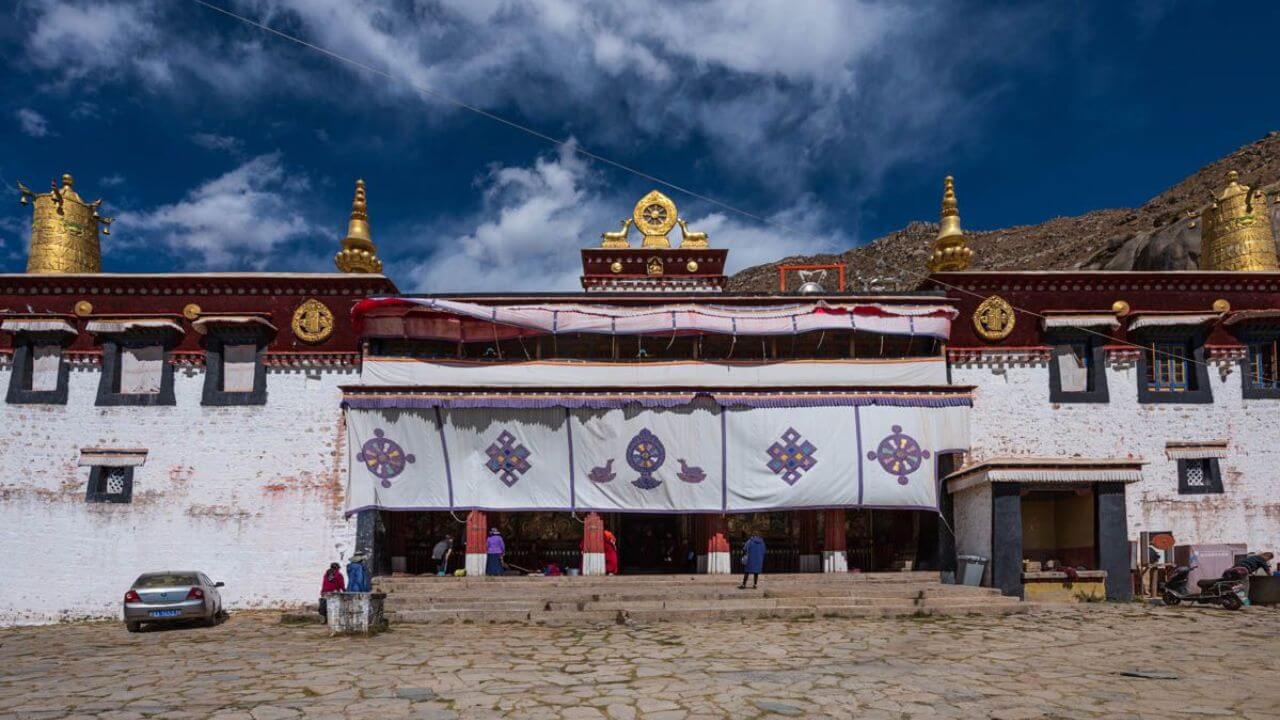
Drepung Monastery
Drepung Monastery was once the largest monastery in the world and a major institution of the Gelugpa school of Tibetan Buddhism. This expansive complex offers a fascinating glimpse into Tibetan monastic life.
What to visit
Vast Complex:
As we wander through the vast grounds of Drepung Monastery, you’ll be amazed by the sheer size and scale of this historic site. There are numerous halls, chapels, and courtyards to explore, each with its own unique charm and significance.
Ganden Potrang:
We’ll visit Ganden Potrang, the former residence of the Dalai Lamas. This part of the monastery is steeped in history and offers insights into the lives of the spiritual leaders of Tibet. The architecture and artifacts here are particularly impressive.
Panoramic Views of Lhasa:
One of the highlights of Drepung Monastery is the breathtaking panoramic views of Lhasa from its elevated position. The serene surroundings and stunning vistas make this a perfect spot for reflection and photography.
Visitor Tips
Explore Less Crowded Areas:
To fully appreciate the tranquility of Drepung Monastery, take some time to explore the less crowded areas. These quieter spots offer a peaceful retreat and a chance to connect more deeply with the spiritual ambiance of the monastery.
Comfortable Footwear:
Given the size of the monastery, be sure to wear comfortable footwear. There will be a fair amount of walking, and comfortable shoes will make your visit more enjoyable.
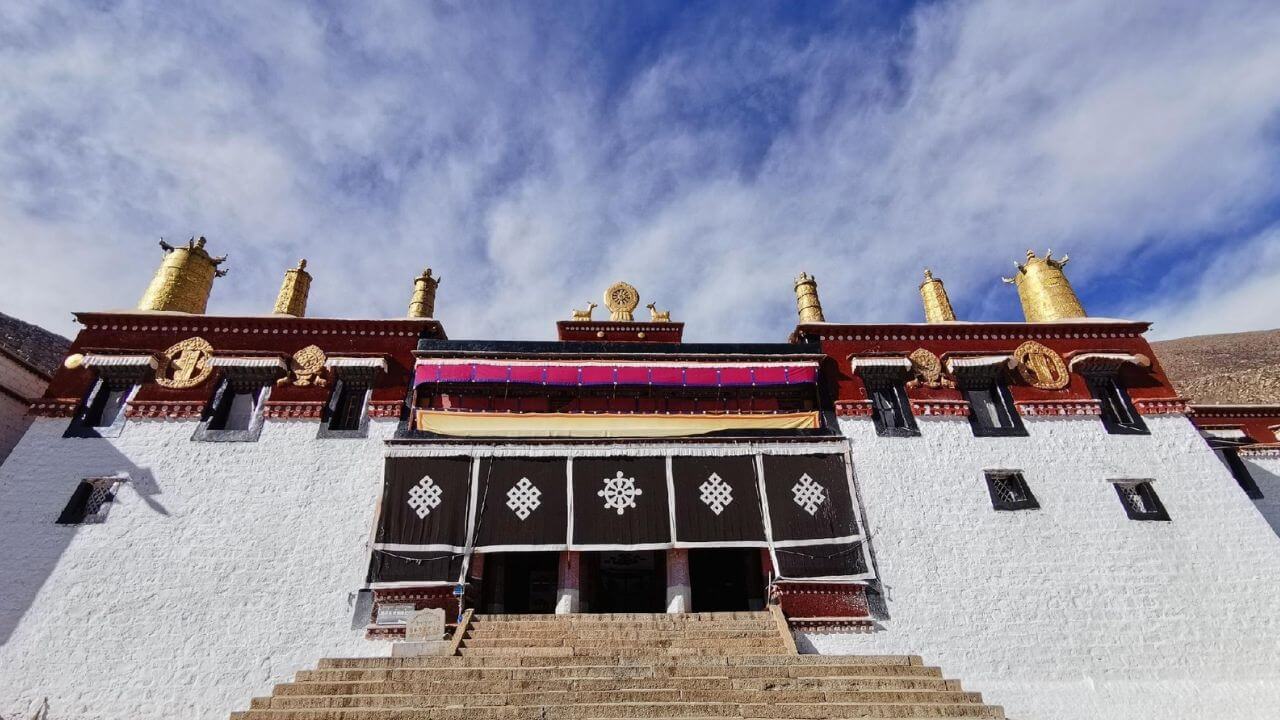
Tibet Museum
Tibet Museum is located near Norbulingka. This museum is a treasure trove of history and culture, offering a comprehensive overview of Tibet’s rich heritage. As we explore the extensive collection of artifacts, religious relics, and ancient manuscripts, we’ll gain a deeper appreciation for the unique and vibrant culture of Tibet.
Highlights of Our Visit
Extensive Collection of Artifacts:
The museum boasts an extensive collection of artifacts that tell the story of Tibet’s past. You’ll see religious relics, ancient manuscripts, and traditional clothing, each item providing a unique glimpse into Tibetan heritage and daily life.
Religious Relics:
Among the museum’s treasures are numerous religious relics. These sacred items offer insights into the spiritual practices and beliefs that have shaped Tibetan culture for centuries.
Ancient Manuscripts:
The collection of ancient manuscripts is particularly impressive. These texts cover a wide range of topics, from religious teachings to historical records, showcasing the depth and diversity of Tibetan scholarship.
Visitor Tips
Allocate a Few Hours:
To fully appreciate the exhibits, it’s best to allocate a few hours for your visit. The museum’s rich and detailed displays are best enjoyed at a leisurely pace, allowing you to absorb the wealth of information and artistry on show.
Interactive Exhibits:
Look out for interactive exhibits that provide a more engaging way to learn about Tibetan culture. These can be particularly enjoyable and informative for visitors of all ages.
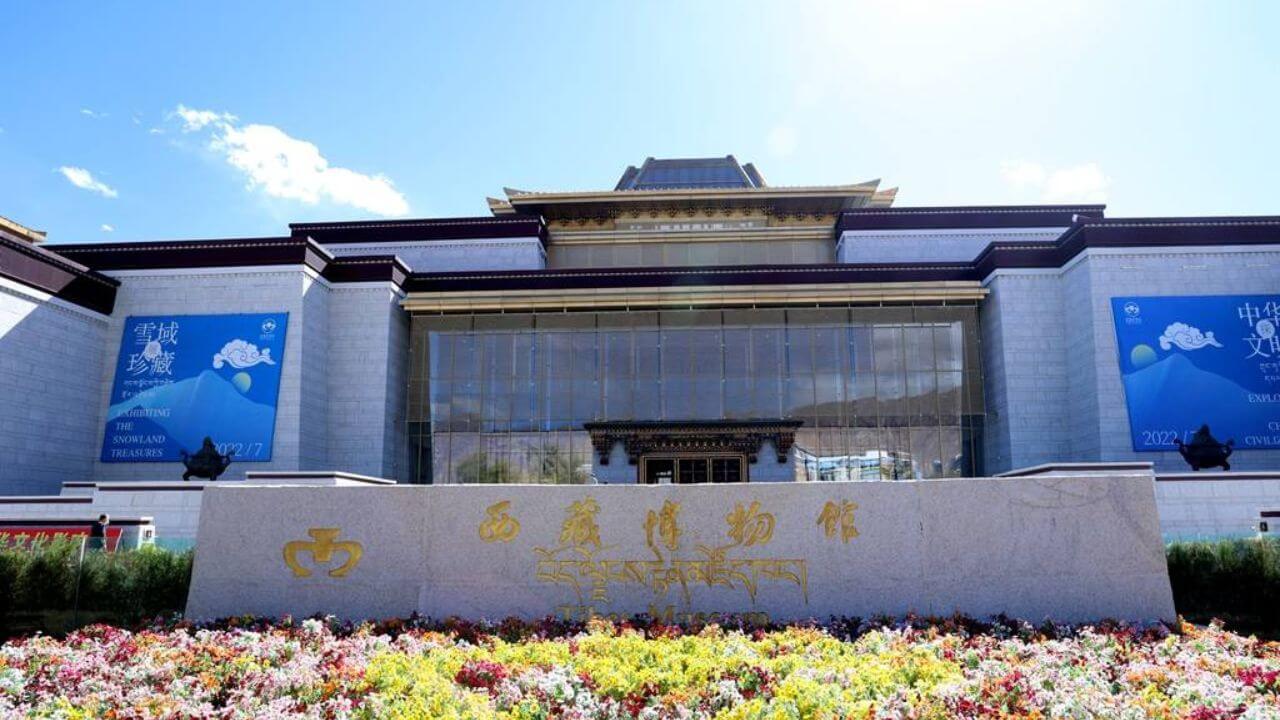
Activities to Do in Lhasa
- Pilgrimage Circuits: Join local pilgrims on kora circuits around Jokhang Temple and Potala Palace for a spiritual experience. Walking these sacred paths offers insight into the deep-rooted Buddhist traditions of the region.
- Local Cuisine: Savor traditional Tibetan dishes such as momos (dumplings), thukpa (noodle soup), and yak butter tea at local restaurants. These dishes provide a taste of the unique flavors and ingredients of the Tibetan plateau.
- Cultural Festivals: If your visit coincides with Tibetan festivals like Losar (Tibetan New Year) or Saga Dawa, participate in the celebrations for a deeper cultural immersion. These festivals are filled with rituals, traditional performances, and community gatherings that highlight Tibetan culture.
- Hiking and Trekking: Explore the surrounding hills and monasteries, such as Ganden Monastery, for stunning views and a sense of adventure. For those seeking more challenging experiences, trekking routes like the Ganden to Samye trek offer breathtaking landscapes and opportunities to connect with remote villages and spiritual sites.

Helen Wang
Travel Advisor & Guide Expert
I started my travel career in 2005 and have since become an expert in Tibet and China’s travel destinations and helping travelers plan unforgettable trips.
For expert travel advice to China or Tibet, feel free to contact me.